
ThePostGame: What inspired you to get into photography?
NEIL LEIFER: I grew up on the Lower East Side of Manhattan. It was a poor and a very tough neighborhood where kids either ended up going up the river to Sing Sing Prison or looking for a college that had free tuition or a scholarship. Keeping kids out of trouble was a big thing, and they had settlement houses where a boy or a girl could study dance or music; I loved to play basketball in the gym. There were different things you could do three, four, five nights a week and the more you got kids to go to these places, the more likely they were to be off the streets, and in some instances learn something that they could use later in life. Well, they had a camera club and I started taking pictures. Nobody could afford a camera or film; they donated cameras and film.
TPG: How old were you?
LEIFER: Thirteen.
TPG: Were you a sports fan?
LEIFER: I lived and breathed the Dodgers, and that was a period of time when the Dodgers would manage to lose the World Series every year to the Yankees, which was terrible, especially in my house because my dad was a Yankee fan. I began shooting sports pictures because it was combining two things that I liked. The idea of getting the best seat in the house at an event and doing something I enjoy doing, which was taking pictures, the combination was perfect. It just was a lucky coincidence because the word business or career didn't exist in my vocabulary as a 14-year-old.
TPG: Let's talk about when you're 16 and you find yourself on the field of what turned out to be the greatest NFL game ever played, the Colts-Giants championship game in 1958. How did you shoot what ultimately became one of the most iconic pictures in sports history?
LEIFER: Well, I'm going to preface this by saying I've never met a good sports photographer or photographer who didn't have a healthy ego, so when I use the word luck, I am not being modest. Luck in sports photography is everything and what separates the really top sports photographer from the ordinary is that when he or she gets lucky, they don't miss. That is the key. But you have to be lucky. For example, my best known picture, Muhammad Ali standing over Sonny Liston, the guy between Ali's legs was an old established boxing photographer, great photographer Herb Scharfman. I don't care how good he was that day; he was in the wrong seat. He was looking up at Ali's rear end and that's the only picture he could get. I was obviously in the right seat, but what matters is I didn't miss.
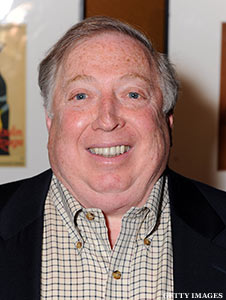
The game that you refer to, the greatest game ever played, was the sudden death game with the Baltimore Colts and the New York Giants, was on my 16th birthday on December 28th, 1958. And that season I couldn't even afford the cheapest ticket to a Giants game. And furthermore what kind of pictures could you shoot from the stands? You were a million miles away. But I found out early that season that every Sunday, there was an Army Veterans Hospital in the Bronx that would bring anywhere from 40 to 60, 70 Army veterans in wheelchairs to the games, and they always needed help. They never had enough people to wheel these people in. In the late '50's, there was no law that made stadiums wheelchair accessible, so they weren't. The only place you could actually bring these wheelchairs was right on the field along the outfield wall. Well, that put you on the field.
So I would volunteer every week, and so did a lot of other young men and older men. Once they got into the stadium, they realized that the worst seat in the house is on the field, particularly when you're stuck in one end zone, unless you're trying to shoot pictures. I was the only one trying to shoot some pictures. Yeah, it took half the game totally out of reach. Actually it took four-fifths of the game because the only camera I had then was this -- I used to call it a poor man's Rolleiflex -- a Yashica Mat with a normal lens. If I had the money to get a medium telephoto, which I dreamed of getting, I would never had shot this picture, which is another luck factor because I just wasn't creative enough to think I would've filled the frame with the play.
Instead, my picture, of course, shows the whole ambiance, the whole mood at Yankee Stadium on a full afternoon. Late in the afternoon, with the sudden death, you had, in film parlance, the magic hour setting in. It was beautiful. You had the lights of the stadium and a little bit of haze and it was wonderful. And there right in front of me, you had every player on the field because I couldn't come in close enough with the lens. And what happened was, of course, Ameche scored the winning touchdown right in our end zone, and at that point I was on the goal line exactly ten yards in front of him, and he came right at me.
Another instance of luck: The play before the one that Ameche scored the touchdown, was a pass in the far right corner where I couldn't even see it let alone get a picture. Had the Colts receiver caught that pass, there would've been no Ameche touchdown. Instead that went incomplete and the next play was the one that came right at me.
TPG: When you shot it did you have any sense at that moment that you may have gotten The Shot of that game?
LEIFER: Oh, God, no, no. It isn't the picture I wanted to shoot. When I first saw the picture, I knew I had a nice picture, but I wished I could've had it closer and filling the frame just like the pros did. It took a long time before the picture got any recognition.
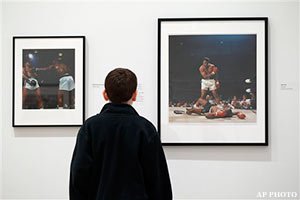
You have to understand, a lot of pictures aren't appreciated when they're first taken and they get a life of their own. The best two examples I can give you are my two best-known pictures, Muhammad Ali standing over Sonny Liston and Ali-Cleveland Williams, which is a remote camera looking down, which is my favorite picture ever. The London Observer did a Sunday magazine piece a few years ago in which they listed the 50 greatest sports photos of all time. I was happy to see Ali-Williams was No. 1 and Ali-Liston was No. 2. At the end of the century when Sports Illustrated did the greatest sports photos, they put Ali-Liston on the cover.
Well, let me tell you about those two pictures. In 1965 when I shot Ali-Liston, there was a contest. I don't want to say it's as important as the Oscars, but in photojournalism it was. It still exists and is sponsored by the University of Missouri and it's called "Pictures of the Year." Time, Inc. was very big in entering it. Life magazine used to win every year, all sorts of awards. Sports Illustrated did. So we entered Ali-Liston. And you know what? Isn't it interesting, the picture that was their photo of the century? It didn't win first place. It didn't win second or third. In fact, it didn't win any of the three honorable mentions. And it didn't make the cover of Sports Illustrated the week of the fight.
How interesting that today it's considered the greatest. Why? Because Ali's reputation grew and the picture grew along with him and it's the way people want to remember Muhammad Ali at his greatest and his best. Ali-Williams, one year later, I thought a sure winner. It didn't win first, second, third or honorable mention again; and years later it's been picked as the best picture by The London Observer where I don't know these people. I mean, this wasn't my uncle running the paper.
TPG: Perspective changes everything.
LEIFER: There are exceptions to that. You see it with Pulitzer Prize winners, with something that's newsworthy. My picture of Johnny Roseboro being hit in the head by Juan Marichal won best spot sports news or whatever they called it because it was a moment. But generally speaking, pictures aren't often appreciated when they're taken. Then as time goes on, the subject becomes more important. Would Ali-Liston be as well-known today if it were two preliminary fighters that you never heard of and same moment? I don't think so.
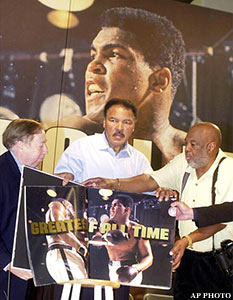
TPG: Have you seen a change between professional athletes and the way they behaved back then when you started shooting those first 10, 15, 20 years compared to the last 15 years?
LEIFER: Frank Deford is one of my closest friends. Frank Deford really lost interest and stopped writing sports stories because you can no longer interview an athlete. You want to cover the Final Four and the Super Bowl, but you don't go into the locker room and interview them after the game. They bring them to an interview room, and they sit on a panel and answer questions. It used to be that Frank would go in the locker room and he'd wait and sit and then he might ask the subject if he could have a drink or have some dinner or lunch, but you sat there and you could ask your own questions. Today everything is managed so differently.
The analogy I'll give you on photography. When I was a young photographer shooting for Sports Illustrated or Life magazine if you wanted to pose Mickey Mantle or Willie Mays or Stan Musial, you waited for batting practice to be finished. And as he was walking back to the dugout, you went over, you put your hand out, you said, 'Hi, Mickey, I'm Neil, we're doing a piece in Sports Illustrated, I'd love to get ten minutes with you.' Depending on Mickey's mood, he said yes or no. But literally it was that simple. Muhammad Ali, you went to the gym and when he finished his session you sat with him for a minute and said, 'Here's what I'm hoping to get and would you have time to pose tomorrow?' And he always said yes. Simple as that.
Today you deal with the P.R. man and perhaps the lawyer, if you want to photograph Kobe Bryant, as an example. You have a better chance of getting a session in the Oval Office with the President than you do of getting one of these athletes in the studio, unless it's to their benefit, and that's weighed by a committee of their manager, their agent and all their people.
TPG: Is there a shot that you thought you nailed but then discovered you didn't, or any one that you wished you'd gotten?
LEIFER: Walter Iooss (pictured, below right, with Neil) was my No. 1 competitor all these years, and the one thing that Walter didn't like, couldn't stand, as much as he was a great football photographer, was the cold. And of course there's the famous Ice Bowl in Green Bay with the Dallas Cowboys and the Green Bay Packers. Walter was dying all game. And I had a very good day; all the plays happened right in front of me. Everything went right. And when there's a big touchdown or a big interception, you sort of look over to see where your competitor is and I realized that I was in a good spot and he wasn't. So the probability is I had a better picture.
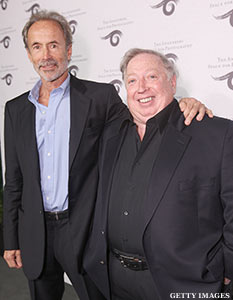
And that went on for 59 minutes and 57 seconds or whatever, and then Green Bay lined up for the last play of the game, which turned out to be Bart Starr sneaking in for the winning touchdown. Bart Starr went in for the touchdown and the first thing that happened is the referee got between me and the play. And it happened right in front of Walter, and I knew. I looked at Walter and I said there's no God. Ha. Walter got the opening spread and he was the hero. I knew Walter wouldn't miss, but the fact is that for 59 minutes and 57 seconds, I was kicking his butt, and then all of a sudden, bingo. And Walter did exactly what Walter always did, he got a great picture.
Another example was the first Ali-Frazier fight. For 14-plus rounds, I had a real good night. My competition was Tony Triolo on the other side of the ring, and this time, I was Herb Scharfman between Ali's legs. In the 15th round Joe Frazier knocks Ali down. It couldn't have been a worse spot. The referee was between me and the fighters, and even if he weren't, I was looking at Frazier's butt -- just like Herbie was looking at Ali's butt. I couldn't see. What I'm proudest of is I actually got a picture that was usable, but I knew I didn't get the cover of the magazine. It happened right in front of Tony Triolo and he didn't miss. He got it and it was a great cover.
TPG: Can you talk about your strategy in terms of positioning, in terms of how you set up, and what you plan on shooting?
LEIFER: There are two kinds of artists, whether it's photographers or painters: There are some that are just very gifted; it's a natural gift. Walter Iooss, I used to like to say, was a genius. He could shoot great pictures with his eyes closed. He didn't work very hard; he didn't have to. And we used to joke about this, Walter and I. He's still a very good friend of mine but if he had covered things the way I did, he'd have been a huge failure. He barely used any equipment. One or two cameras were all he would use, where I would have a battery of cameras for every possible situation.
He never realized that you were supposed to put fresh batteries in the motor drive. The game would be about to start and he'd be punching the bottom of the camera to try to get the motor to work. He was the last person to arrive at the stadium; the national anthem was going on half the time. But he never missed. He just intuitively was that good, and he was just a natural. I, on the other hand, don't have that ability. And by the way, I will let my ego go out as far as it can go, I'd have hired me first every time; I didn't miss either. But to keep up with Walter -- just keep up with anybody -- I had to work five times as hard.
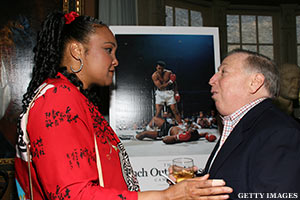
I was the first person in the stadium. I would be looking to see what time is the shadow going to go across the field, what backgrounds might be. Even though you don't sit thinking about them when you're shooting action, if you're aware where you position yourself, you know that a certain background is going to be wonderful from that area. Is this the stadium in which the backlit picture is going to look better than the front lit? But my editor loves bright, beautiful pictures with the sun if the sun is out. So maybe you want to get the sun right over your shoulder like Eastman Kodak says it should be. My equipment was always in perfect working condition. I had cleaned the lenses. I had changed the batteries. I had my cameras repaired regularly if there was any possible problem with them. What I'm getting at is that I did my homework and I studied as much as I could. I needed that help. Once the game began I was every bit as good as anyone else, but it took a lot work.
TPG: How has digital changed sports photography?
LEIFER: I grew up putting film in the camera, but I'm not one of those old-fashioned guys. I'll start by telling you there is no question that digital cameras and the whole system today is so superior to the ones we worked with. The motor-driven cameras work much better, they're faster, they're better. Autofocus. Walter Iooss once told me that autofocus added 10, 20 years to his career. He's right because the two things that every photographer worried about shooting sports where long lenses are a way of life, was in eye-hand coordination. John Biever, great, great photographer still shooting for SI, fabulous football photographer, great eye-hand coordination with long lenses. Walter had great eye-hand coordination with long lenses. I was pretty damn good at it. It is very easy, particularly for older photographers, to say 'Oh, today the camera does it all.'
Well, how interesting it is that the best pictures are still being taken by Jim Knockwhite, Annie Leibowitz, John Biever, Walter Iooss and a number of photographers who are much closer to 65 than they are to 25. They grew up in the era of film and they're still taking fabulous pictures. So it's the photographer that does it, but the equipment is so good today that the two things that every good photographer worried about -- and I was quite good technically -- but you always worried about did I nail the focus because it wasn't automatic; and you worried about your exposure because film had a limited latitude. Look at the pictures from night baseball today. You can see faces. You see things you never saw before.
TPG: What about sequencing vs. the "one shot"?
LEIFER: In sports photography you must shoot sequence because you really don't know what's going to happen, and I'll give you an example. It's the final play in the Super Bowl. They're lined up on the one-inch line and you expect that the quarterback is going to hand off to the fullback who's going to dive over the line and bull his way into the end zone. And there you are right in front and lo and behold the fullback got the ball; he goes eight feet up in the air, and he dives in. Now let's take the single shot that you're talking about. Single shot, and you shoot him bingo, you nail it right on the nose. Now you've got to wind the camera and what happens the minute you shot the picture? He gets hit and the ball pops out. You were winding the film. And then the first guy that tries to recover it, when maybe you've wound it enough and you shoot, doesn't get it. If the offensive team gets the ball they win the game; if the defensive team gets the ball, they win the game.
If you've got one shot, you can't get it. You need sequence because you were a hero two seconds ago and you're now a bum; nobody cares about the beginning of that play. You have to have sequence a big play at the plate. They bang into each other. You nailed it right at the moment of the collision, but now the ball pops out. That's the picture.
Sure, I love to boast about the fact that Ali-Liston was one shot and Alan Ameche was one shot. But doesn't it diminish my picture of Secretariat winning the Derby, which was certainly not. Not one bit. I had to set that picture up and I had to plan for that picture and then when it happened, I nailed it.







